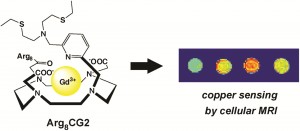This month sees the following articles in Chemical Science that are in the top ten most accessed:-
Concise total synthesis of (+)-gliocladins B and C
Nicolas Boyer and Mohammad Movassaghi
Chem. Sci., 2012,3, 1798-1803, DOI: 10.1039/C2SC20270K
A highly selective vanadium catalyst for benzylic C-H oxidation
Ji-Bao Xia, Kevin W. Cormier and Chuo Chen
Chem. Sci., 2012, Advance Article, DOI: 10.1039/C2SC20178J
Rethinking the Term “Pi-Stacking”
Chelsea R. Martinez and Brent L. Iverson
Chem. Sci., 2012, Advance Article, DOI: 10.1039/C2SC20045G
Hindered biaryls by C-H coupling: bisoxazoline-Pd catalysis leading to enantioselective C-H coupling
Kazuya Yamaguchi, Junichiro Yamaguchi, Armido Studer and Kenichiro Itami
Chem. Sci., 2012, Advance Article, DOI: 10.1039/C2SC20277H
Metal-Free Diamination of Alkenes Employing Bomide Catalysis
Patricia Chávez, Jonathan Kirsch, Claas H. Hövelmann, Jan Streuff, Marta Martínez-Belmonte, Eduardo C. Escudero-Adán, Eddy Martin and Kilian Muñiz
Chem. Sci., 2012, Advance Article, DOI: 10.1039/C2SC20242E
Catalytic C-H oxidation by a triazamacrocyclic ruthenium complex
Eric McNeill and J. Du Bois
Chem. Sci., 2012,3, 1810-1813, DOI: 10.1039/C2SC20118F
Alkylated organic cages: from porous crystals to neat liquids
Nicola Giri, Christine E. Davidson, Gavin Melaugh, Mario G. Del Pópolo, James T. A. Jones, Tom Hasell, Andrew I. Cooper, Peter N. Horton, Michael B. Hursthouse and Stuart L. James
Chem. Sci., 2012,3, 2153-2157, DOI: 10.1039/C2SC01007K
Lattice-imposed geometry in metal-organic frameworks: lacunary Zn4O clusters in MOF-5 serve as tripodal chelating ligands for Ni2+
Carl K. Brozek and Mircea Dincă
Chem. Sci., 2012,3, 2110-2113, DOI: 10.1039/C2SC20306E
Size-selective synthesis of [9]-[11] and [13]cycloparaphenylenes
Yuuki Ishii, Yusuke Nakanishi, Haruka Omachi, Sanae Matsuura, Katsuma Matsui, Hisanori Shinohara, Yasutomo Segawa and Kenichiro Itami
Chem. Sci., 2012, Advance Article, DOI: 10.1039/C2SC20343J
Graphene-based electronic sensors
Qiyuan He, Shixin Wu, Zongyou Yin and Hua Zhang
Chem. Sci., 2012,3, 1764-1772, DOI: 10.1039/C2SC20205K
Why not take a look at the articles today and blog your thoughts and comments below.
Fancy submitting an article to Chemical Science? Then why not submit to us today or alternatively contact us with your suggestions.

















